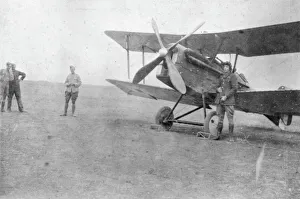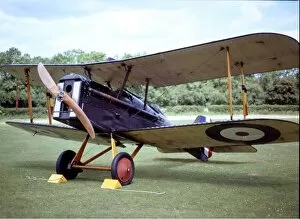Se5a Collection
The British SE5A biplane gracefully stands on the airfield, a symbol of its remarkable contribution during World War As an iconic aircraft of the Royal Air Force (RAF
All Professionally Made to Order for Quick Shipping
The British SE5A biplane gracefully stands on the airfield, a symbol of its remarkable contribution during World War As an iconic aircraft of the Royal Air Force (RAF), the SE-5a played a pivotal role in shaping history. James Thomas Byford McCudden, a skilled pilot, soared through the skies with this magnificent machine, showcasing its power and agility. Captured beautifully by Hugh W. Cowin's lens, the Royal Aircraft Factory SE 5a exudes strength and elegance in every frame. Its sleek design and formidable capabilities made it a force to be reckoned with on the battlefield. With each RAF SE-5a taking flight, they carried not only brave pilots but also hope for victory against enemy forces. These planes became synonymous with courage and resilience as they defended their homeland from above. The repeated mention of RAF SE-5a emphasizes its significance during that era - an aircraft that left an indelible mark on aviation history. The repetitive listing serves as a testament to its widespread use and recognition among aviators. As we look back at these images of the RAF SE-5a, we are reminded of the bravery displayed by those who flew them into battle. Their unwavering determination paved the way for future generations of aviators and shaped modern warfare tactics. Let us remember and honor both man and machine - James Thomas Byford McCudden alongside his trusted companion, the RAF SE-5a biplane - for their invaluable contributions to our shared history.











